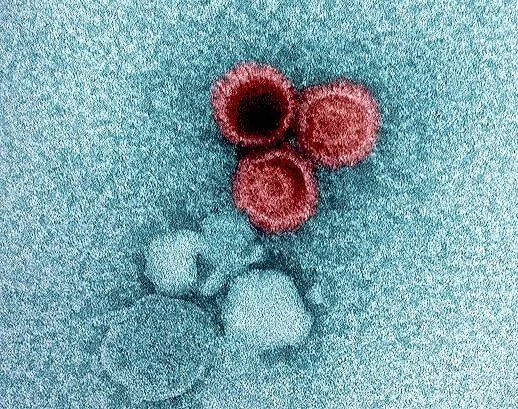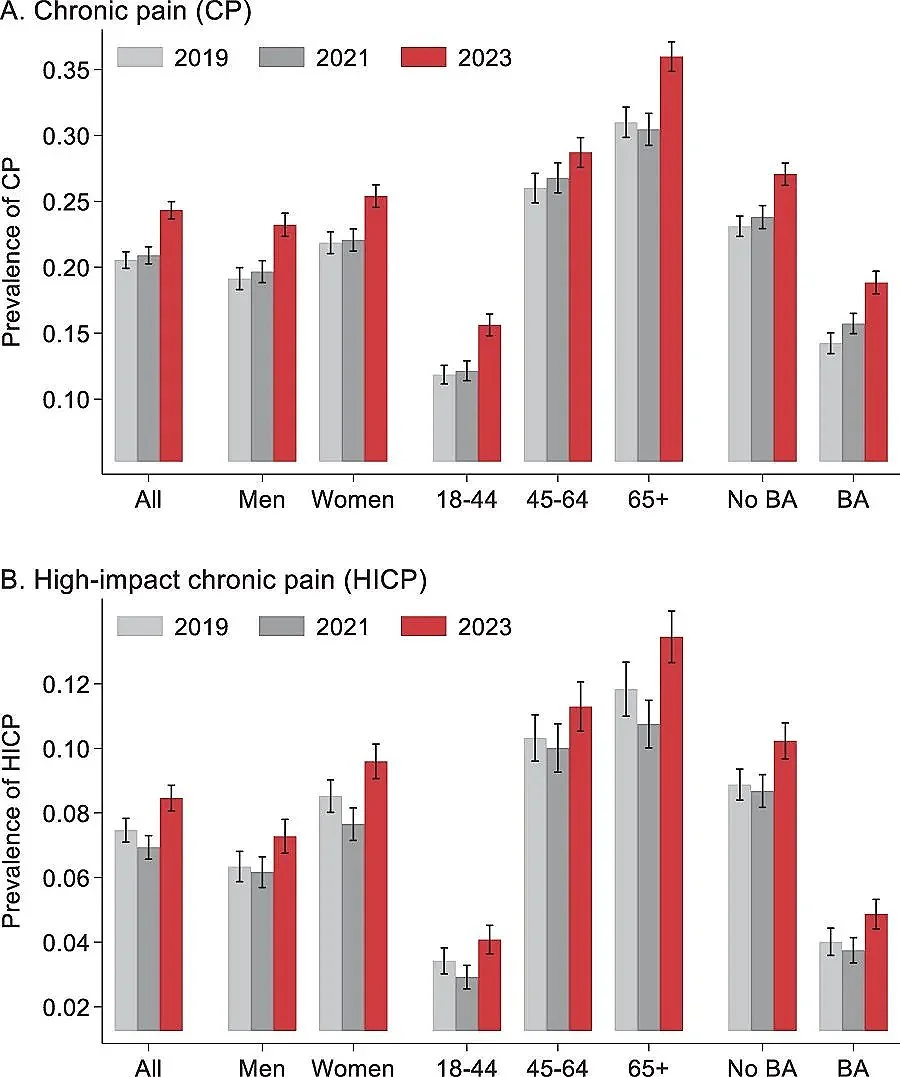Scientists ridiculed the site’s declaration that studies “have not ruled out the possibility that infant vaccines cause autism.” While upward of 25 large studies have shown no link between vaccines and autism, it is scientifically impossible to prove a negative, said David Mandell, director of the Center for Autism Research at Children’s Hospital of Philadelphia.
The webpage’s new statement that “studies supporting a link have been ignored by health authorities” apparently refers to work by vaccine opponent David Geier and his father, Mark, who died in March, Mandell said.
Their research has been widely repudiated and even ridiculed. David Geier is one of the outside experts Kennedy hired to review safety data at the CDC.
Asked for evidence that scientists had suppressed studies showing a link, HHS spokesperson Andrew Nixon pointed to older reports, some of which called for more study of a possible link. Asked for a specific study showing a link, Nixon did not respond.
‘Using CDC to Spread Lies’
Infectious disease experts, pediatricians, and public health officials condemned the alteration of the CDC website. Although Kennedy has made no secret of his disdain for established science, the change came as a gut punch because the CDC has always dealt in unbiased scientific information, they said.
Kennedy and his “nihilistic Dark Age compatriots have transformed the CDC into an organ of anti-vaccine propaganda,” said Amesh Adalja, a senior scholar at the Johns Hopkins Center for Health Security.
“On the one hand, it’s not surprising,” said Sean O’Leary, a professor of pediatrics and infectious disease at the University of Colorado. “On the other hand, it’s an inflection point, where they are clearly using the CDC as an apparatus to spread lies.”
“The CDC website has been lobotomized,” Atul Gawande, an author and a surgeon at Brigham and Women’s Hospital, told KFF Health News.
CDC “is now a zombie organization,” said Demetre Daskalakis, former director of the National Center for Immunization and Respiratory Diseases at the CDC. The agency has lost about a third of its staff this year. Entire divisions have been gutted and its leadership fired or forced to resign.
Kennedy has been “going from evidence-based decision-making to decision-based evidence making,” Daniel Jernigan, former director of the CDC’s National Center for Emerging and Zoonotic Infectious Diseases, said at a news briefing Nov. 19. With Kennedy and his team, terminology including “radical transparency” and “gold-standard science” has been “turned on its head,” he said.
Sen. Cassidy Goes Quiet
The new webpage seemed to openly taunt Sen. Bill Cassidy (R-La.), a physician who chairs the Senate Health, Education, Labor, and Pensions Committee. Cassidy cast the tie-breaking vote in committee for Kennedy’s confirmation after saying he had secured an agreement that the longtime anti-vaccine activist wouldn’t make significant changes to the CDC’s vaccine policy once in office.
The agreement included a promise, he said, that the CDC would not remove statements on its website stating that vaccines do not cause autism.
The new autism page is still headed with the statement “Vaccines do not cause Autism,” but with an asterisk linked to a notice that the phrase was retained on the site only “due to an agreement” with Cassidy. The rest of the page contradicts the header.
“What Kennedy has done to the CDC’s website and to the American people makes Sen. Cassidy into a total and absolute fool,” said Mark Rosenberg, a former CDC official and assistant surgeon general.
On Nov. 19 at the Capitol, before the edits were made to the CDC website, Cassidy answered several unrelated questions from reporters but ended the conversation when he was asked about the possibility Kennedy’s Advisory Committee on Immunization Practices might recommend against a newborn dose of the hepatitis B vaccine.
“I got to go in,” he said, before walking into a hearing room without responding.
Cassidy has expressed dismay about the vaccine advisory committee’s actions but has avoided criticizing Kennedy directly or acknowledging that the secretary has breached commitments he made before his confirmation vote. Cassidy has said Kennedy also promised to maintain the childhood immunization schedule before being confirmed.
The senator criticized the CDC website edits in a Nov. 20 post on X, although he did not mention Kennedy.
“What parents need to hear right now is vaccines for measles, polio, hepatitis B and other childhood diseases are safe and effective and will not cause autism,” he said in the post. “Any statement to the contrary is wrong, irresponsible, and actively makes Americans sicker.”
Leading autism research and support groups, including the Autism Science Foundation, the Autism Society of America, and the Autism Self Advocacy Network, issued statements condemning the website.
“The CDC’s web page used to be about how vaccines do not cause autism. Yesterday, they changed it,” ASAN said in a statement. “It says that there is some proof that vaccines might cause autism. It says that people in charge of public health have been ignoring this proof. These are lies.”
What the Research Shows
Parents often notice symptoms of autism in a child’s second year, which happens to follow multiple vaccinations. “That is the natural history of autism symptoms,” said Tager-Flusberg. “But in their minds, they had the perfect child who suddenly has been taken from them, and they are looking for an external reason.”
When speculation about a link between autism and the measles, mumps, and rubella vaccine or vaccines containing the mercury-based preservative thimerosal surfaced around 2000, “scientists didn’t dismiss them out of hand,” said Tager-Flusberg, who has researched autism since the 1970s. “We were shocked, and we felt the important thing to do was to figure out how to quickly investigate.”
Since then, studies have clearly established that autism occurs as a result of genetics or fetal development. Although knowledge gaps persist, studies have shown that premature birth, older parents, viral infections, and the use of certain drugs during pregnancy — though not Tylenol, evidence so far indicates — are linked to increased autism risk.
But other than the reams of data showing the health risks of smoking, there are few examples of science more definitive than the many worldwide studies that “have failed to demonstrate that vaccines cause autism,” said Bruce Gellin, former director of the National Vaccine Program Office.
The edits to the CDC website and other actions by Kennedy’s HHS will shake confidence in vaccines and lead to more disease, said Jesse Goodman, a former FDA chief scientist and now a professor at Georgetown University.
This opinion was echoed by Alison Singer, the mother of an autistic adult and a co-founder of the Autism Science Foundation. “If you’re a new mom and not aware of the last 30 years of research, you might say, ‘The government says we need to study whether vaccines cause autism. Maybe I’ll wait and not vaccinate until we know,’” she said.
The CDC website misleads parents, puts children at risk, and draws resources away from promising leads, said Paul Offit, director of the Vaccine Education Center at the Children’s Hospital of Philadelphia. “Kennedy thinks he’s helping children with autism, but he’s doing the opposite.”
Many critics say their only hope is that cracks in President Donald Trump’s governing coalition could lead to a turn away from Kennedy, whose team has reportedly tangled with some White House officials as well as Republican senators.
Polling has also shown that much of the American public distrusts Kennedy and does not consider him a health authority, and Trump’s own approval rating has sunk dramatically since he returned to the White House.
But anti-vaccine activists applauded the revised CDC webpage.
“Finally, the CDC is beginning to acknowledge the truth about this condition that affects millions,” Mary Holland, CEO of Children’s Health Defense, the advocacy group Kennedy founded and led before entering politics, told Fox News Digital.
“The truth is there is no evidence, no science behind the claim vaccines do not cause autism.”
Céline Gounder, Amanda Seitz, and Amy Maxmen contributed to this report. KFF Health News is a national newsroom that produces in-depth journalism about health issues.






